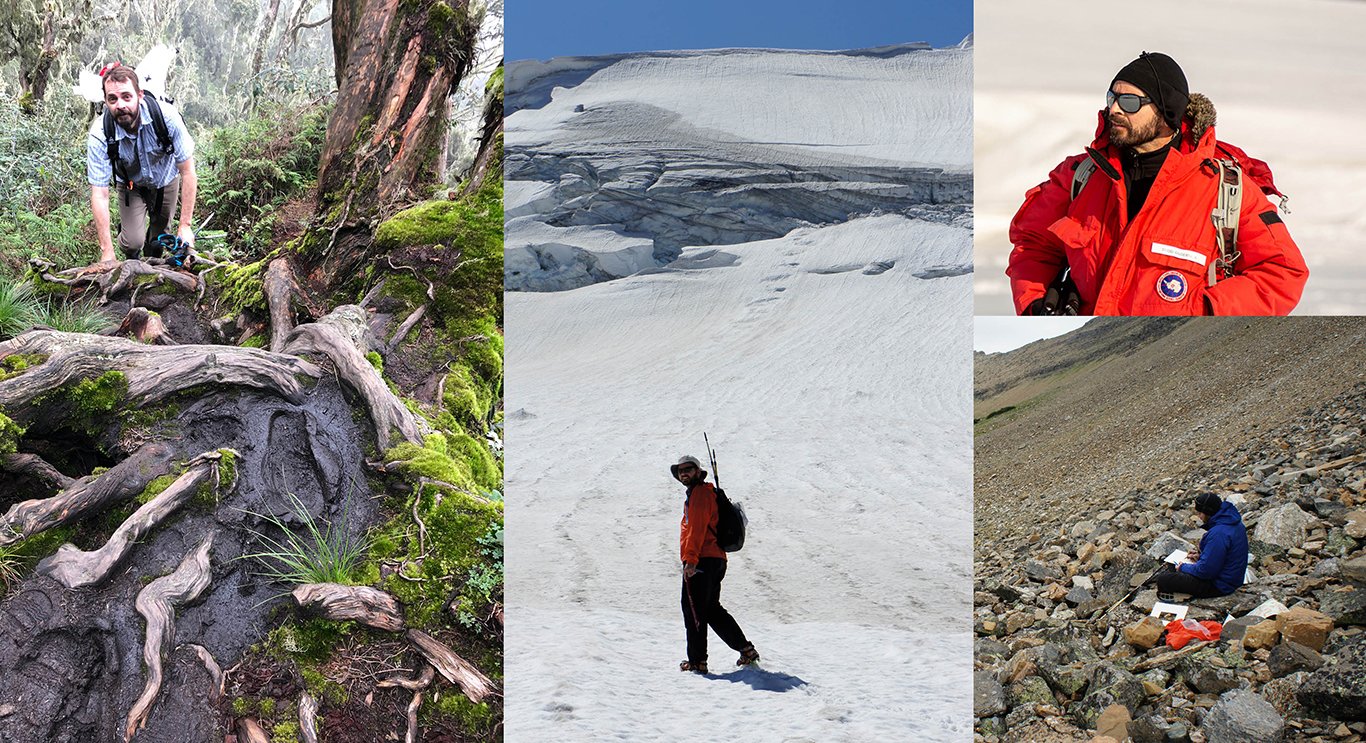Anderson’s Artworks
Todd Anderson’s practice weaves together climate science, scholarly research, collaboration with scientists, fieldwork in remote regions, and studio-based artwork creation. His expeditions—spanning Africa, the Arctic, Antarctica, and the glaciers and deserts of the American West—demand physical endurance and months of preparation. While some locations require logistical support, his approach in the field draws on contemporary alpinism and leave-no-trace ethics: traveling light, moving fast, and working in small, self-sufficient teams.
“Knowledge alters perception,” Anderson says. “My aim is to contextualize my subject—whether a threatened tree species or a retreating glacier—within broader scientific and intellectual frameworks.” His work often appears alongside essays by scientific and philosophical collaborators, offering deeper perspectives on the realities of global heating. “Glacial ice melts without replenishment. Tree species adapt or perish. These truths demand new ways of understanding the world.” His goal: to deepen collective perceptions of nature and help reframe how we approach the global climate crisis.
Anderson’s limited-edition mixed-media prints, reduction and multiple-block woodcuts, and photographs are original artworks rooted in Western fine art traditions and influenced by 17th–19th century Japanese ukiyo-e, which sought to better connect humans with nature while critiquing societal priorities. “My artwork seeks to be accessible to a broad audience,” he says. “If they could talk, they’d say, ‘Here is a glacier—or an iceberg or a tree—rendered with care. Let’s first agree on the beauty and wonder of this. Then let’s consider how global heating threatens it, and us.’”
Anderson continues, “My artworks overwhelmingly utilize first-person perspectives—a visual strategy that lends a photojournalistic sensibility that suggests ‘this is so’ and ‘what you see is real.’ …If I can suspend the viewer’s disbelief, even for just a moment, the world can be considered and seen in new ways.”
A meticulous draftsperson (drawing) and trained master printer, he sketches, hand-inks, and prints each work on traditional washi over the course of three to six weeks. His photographs undergo similar careful curation. His many collaborative book projects often span two or more years.
Anderson’s artworks are available for purchase through several outlets (see Affiliations above). For inquiries about speaking engagements, workshops, or other information, contact him directly at ToddAndersonArtist@gmail.com
Anderson describes his work. Video: 4 min. in length; produced by Clinton Colemenares and Ken Scar, Clemson University.
